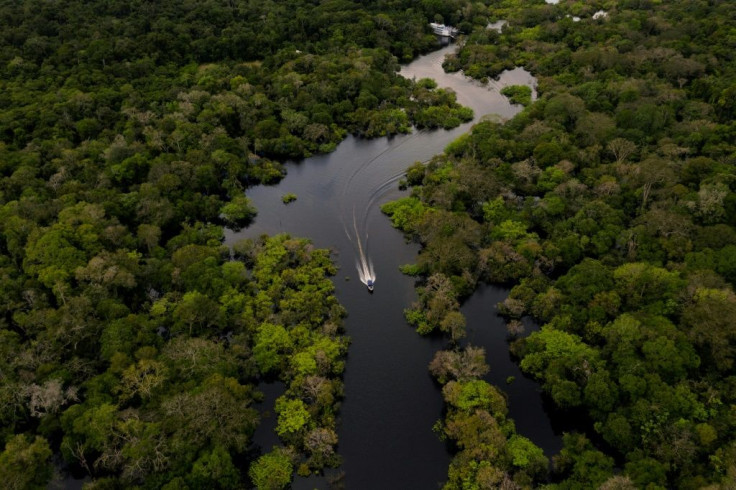Global Study Of World's Rivers Finds Pharmaceutical Contamination In 'Every Continent'
KEY POINTS
- Majority of the 61 pharmaceuticals were found in 'at least one' sampling site
- Metformin, carbamazepine and caffeine were the most frequently found active pharmaceutical ingredients: Study
- The researchers' work is the first 'truly global scale' study of medicine contamination
Medicines are important for people's health, but they can also end up in the world's waters. A "truly" global study that looked at the pharmaceutical pollution in rivers has found contamination in all continents.
Active pharmaceutical ingredients (API) can be released to the environment when they are manufactured, used or disposed of. Environmental exposure to them can be harmful to ecosystems as well as human health, researchers of the new study, published in Proceedings of the National Academy of Sciences (PNAS), noted.
"Despite growing evidence of the deleterious effects on ecological and human health, little is known regarding the global occurrence of pharmaceuticals in rivers," they wrote.
So far, much of the "numerous" studies on the matter have been done in places like North America, Western Europe and even China, the University of York noted in a news release. With many other regions having been largely left out of such studies, it has been difficult to truly understand the scope of the problem on a global level.
Global Scale
For their work, which is part of the University of York-led Global Monitoring of Pharmaceuticals Project, the researchers looked at the level of API pollution in 258 rivers in 104 countries, representing all the continents in the world. Among these countries, 36 were not included in previous such studies.
For the effort, the researchers collected samples from "noteworthy" rivers such as the River Thames, the Amazon river, as well as the Mississippi and Mekong Rivers. They also obtained samples from rivers in areas where modern medicine is not really used, such as the Yanomami Village in Venezuela, the university noted. Samples were also collected from highly populated sites such as in Delhi and New York, as well as the ones where there is political instability, such as Baghdad and the Palestinian West Bank.
In total, the researchers collected water samples from 1,052 locations to measure the presence of 61 APIs such as metformin, caffeine, nicotine, naproxen and paracetamol.
Contamination In Every Continent
The researchers found API contamination in every continent of the world, with a quarter of the sites having contaminants at "potentially harmful concentrations," the university noted.
"Concentrations of at least one API at 25.7% of the sampling sites were greater than concentrations considered safe for aquatic organisms, or which are of concern in terms of selection for antimicrobial resistance," the researchers wrote.
Among the countries and regions, the ones that were least researched — sub-Saharan Africa, South America and some parts of southern Asia — were actually the most polluted ones. Moreover, the most contaminated sites were in the low- to middle-income countries where there is poor wastewater management, the researchers noted.
Most Commonly Detected Pharmaceuticals
In the case of the 61 APIs, 53 were detected in "at least one" sampling site, with the most commonly detected ones — metformin, carbamazepine and caffeine — being found in half of the sites involved.
Of these, carbamazepine, which is used to treat nerve pain and epilepsy, was the "most frequently detected" drug, having been found in 62% of the sampling sites or 652 locations across all the continents except for Antarctica. Caffeine, on the other hand, was detected in all seven continents.
Of the countries involved, Iceland was the only one where "none" of the 61 pharmaceuticals the researchers were looking for was detected, the Global Monitoring of Pharmaceuticals Project noted.
"We show that the presence of these contaminants in surface water poses a threat to environmental and/or human health in more than a quarter of the studied locations globally," the researchers wrote.
New paper out today by John Wilkinson, Alistair Boxall and colleagues presenting the first truly global study of pharmaceutical pollution of riverine systems:
— ECORISC CDT (@ECORISC_CDT) February 14, 2022
Pharmaceutical pollution of the world’s rivers https://t.co/mv2uf3GmgH
"We've known for over two decades now that pharmaceuticals make their way into the aquatic environment where they may affect the biology of living organisms," Dr. John Wilkinson of the University of York's Department of Environment and Geography, study co-lead, said in the university news release.
"Through our project, our knowledge of the global distribution of pharmaceuticals in the aquatic environment has now been considerably enhanced," he added.

© Copyright IBTimes 2024. All rights reserved.












